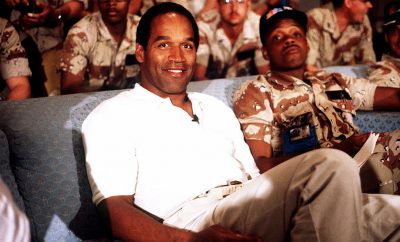 Image courtesy of [Shinya Suzuki via Flickr]
Image courtesy of [Shinya Suzuki via Flickr]
Entertainment
Gender Discrimination in Film is Still the Norm
In what seems like an action that should have been taken decades ago, the Equal Employment Opportunity Commission (EEOC) launched an investigation this month into the hiring practices of Hollywood; specifically, how many female filmmakers are being excluded from the job pool based on gender bias.
The EEOC reportedly sent a letter out to about 50 women filmmakers, requesting interviews to see what actions could be taken against the worst offenders of gender discrimination in the film industry.
They have a lot of work to do.
The numbers have always been discouraging for women who want to pursue careers behind the camera. In an annual study released by San Diego State University’s Center for the Study of Women in Television and Film, in 2014 women represented just 17 percent of “behind-the-scenes” roles in the 250 top-grossing films. These roles were defined in the study as including directors, writers, executive producers, producers, editors, and cinematographers. Even more disheartening is the proportion of female directors for those films: just seven percent.
Television hasn’t fared much better. The Directors Guild of America (DGA) released its annual report on the demographics of television directors in August. It found what the DGA is calling “modest improvement”: out of nearly 4,000 episodes produced in the time span studied, 16 percent of those episodes were directed by women (this was a “modest improvement” from last year’s 14 percent). Only three percent of that 16 were minority women.
“The uptick in the number of episodes directed by women–modest but hopeful–is just a drop in the bucket of what needs to be done…before we can begin to realize equal opportunities in television for our members,” said DGA President Paris Barclay. “Without employers making a concerted effort to bringing a more diverse mix of new entrants to the hiring pool, we won’t see meaningful and lasting change.”
Just how can we tell if employers for films and television are open to diversity? Hopefully, the EEOC will find out in its interviews. Obviously, we don’t want companies hiring women just to fill a void. Directors, writers, producers, etc. should be hired based on merit and creativity. However, that huge gap indicates a problem that can’t be explained away by “maybe men are just better at [insert job description here].”
Those percentages are just the tip of the iceberg in indicating how male-centric Hollywood–and media in general–actually is. It doesn’t just apply to women behind the camera. Going back to those studies conducted by SDSU, just under half of major television characters (42 percent) are women, with the majority of those characters belonging to ABC–thank you, Shonda Rhimes. That is a really positive number, but diving a little deeper into it, we start to see the inequality in that misleading 42 percent. According to the study, most of those female characters belonged to reality television programs, were younger than their male counterparts (very few of them were over 60), and 77 percent of them were Caucasian. So, you see, it isn’t just about the numbers. Representation can also be discriminatory.
We see these issues the most in film. With only 12 percent female protagonists in the top 100 films of 2014, a bias toward male characters is obvious.
Now, how many of those films with female protagonists can actually pass the well-known Bechdel Test? All it calls for are two female characters (they don’t even have to be named) talking to each other about something other than a man. It is surprising how many films fail such a simple criteria. While the Bechdel Test may not be a champion for feminist ideals or for great filmmaking, it is a good jumping-off point to see the commonality of gender stereotypes.
So what can the EEOC do with all this information, and the insights it will gather from its upcoming interviews? Class action lawsuits are the most likely, and unfortunately, it might not even come to that. What truly can affect change will be the actions of the women already in the industry. They can move forward with their own careers while reaching out to more women like them–hopefuls wanting to direct, write, produce, or act. Writers can create more dimensional parts for women. Producers can push for shows with more accurate female representation. Actresses can refuse parts that stereotype them. The more everyone becomes aware of the gap, the more we can all work together to close it.








Comments